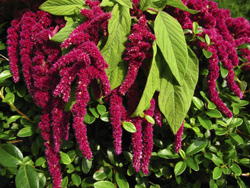Food and economic security from ancient grain type
Amaranth is a type of invasive plant high in protein and gluten-free that was the main source of food in Mexico and South America thousands of years ago. It is particularly hearty, easily flourishing in the hot and arid climates of the aforementioned regions, with over 50 species known today. Although interest in amaranth has been strong, only with the recent advent of more modern technologies has it been possible to elucidate the properties of the various species with the goal of targeted breeding of new varieties. The ‘Adding value to holy grain: Providing the key tools for the exploitation of amaranth the protein-rich grain of the Aztecs’ (Amaranth:Future-Food) project was conceived by 11 international partners to provide a basis for effective and sustainable exploitation of amaranth, both for food security and for sale to aid vulnerable populations. The Amaranth:Future-Food team demonstrated that selective breeding of amaranth can successfully produce desired characteristics and that it is easily cultivated under a variety of soil and climate conditions. In addition to being used in its plant form as food for humans or feed for livestock, amaranth oil is particularly attractive to the pharmaceutical industry for its potential as a nutrient supplement and to the cosmetics industry for use in various hair and body products; thus, its commercial value as a crop is quite attractive. In summary, modern technology enabled EU-funded researchers on the Amaranth:Future-Food project to manipulate and characterise amaranth as a crop for food and industrial exploitation by vulnerable populations in hot and arid regions. The project outcomes support the potential of this ancient high-protein invasive plant to once again provide food and economic security to Central and South America as well as to other similar regions of the world.







